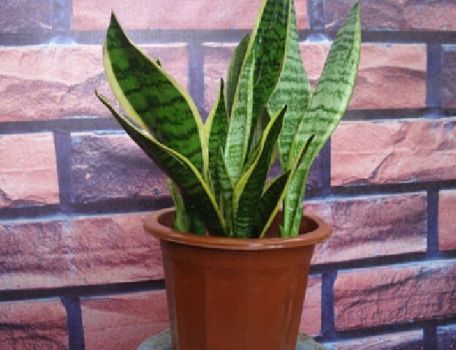How to transplant tiger skin orchid and the method of propagation (ramet and cuttage)
Tiger Pilan is also called Tiger tail Orchid. I believe everyone has heard of this plant. It is a plant that is of great help to people's family life. It can not only purify the air in the home, but also absorb harmful substances and harmful gases from plums in the room. So many people are keen to keep it. So how to transplant Tiger Pilan? In fact, it can be roughly divided into two types: sub-plant / cutting. what is the specific breeding method of Tiger Pilan? let's take a look down with the editor.
First, how to transplant tiger skin orchid and the air permeability of flowerpot is very important

1. Selection of flowerpots and soil
About tiger skin orchid how to transplant, soil and flowerpot are many choices, for soil requirements, generally choose better drainage sandy loam or rotten leaf soil and sand mixed soil is OK; flowerpot then mud or plastic, pottery and other materials are OK, flowerpot appearance generally recommended that we choose tall feet, which is conducive to the beauty of tiger skin orchid plant shape, of course, this varies from person to person.
Note: when looking for soil, it is best to look for soil in autumn and winter, because most insects have stopped moving in this season, so as to avoid being bitten by poisonous insects and do harm to people.
two. Transplant method, Korean pine needle at the bottom
Before transplanting tiger skin orchid, it is best to put a layer of Korean pine needle at the bottom of the flowerpot, which can effectively ensure air permeability, prevent tiger skin orchid from rotting roots, mix some rotten soil with carbon ash, and then transplant tiger skin orchid into a new pot. then prepare some stones to clean and put on it, which can prevent pests from eroding the soil, and it is both beautiful and practical.
Note: it is necessary to take pine needles that have rotted for a long time. Rotten pine needles contain trace elements needed for plant growth, which are very suitable for growing flowers. Paying attention to this will be of great help to the cultivation of tiger orchid.
2. Propagation methods, plantlets / cuttings of Polygonum cuspidatum
The propagation method of tiger skin orchid is relatively simple compared with other plants, which can be divided into two categories, namely ramet and cuttage. Of course, this is only a classification of the general direction, there are still many points that need to be paid attention to, what are the specific ones? Let's move on.
1. Ramet
In the breeding method of tiger skin orchid, ramet can be said to be the most common way, and this method is suitable for almost all species of tiger skin orchid. Specific methods: first, take the whole plant out of the basin, remove the old culture soil, expose the rhizome and cut it into several plants along its direction, and 2-3 plants can be planted in each pot. This method can raise seedlings all the year round, but it is the best in spring and summer, and can be combined with changing pots in spring.
Note: when putting on the basin, pay attention to sprinkling some fine sand on the root of the plant to facilitate survival. The basin soil had better be sandy culture soil with loose, fertile and good permeability. There is also a section of rhizome and sucking bud, which can be planted in the pot respectively.
two。 Cuttage
Among the propagation methods of tiger orchid, cutting is relatively minority compared with the split plant method, this method is only aimed at the varieties of tiger skin orchid without golden edge or silver vein. Generally, the mature tiger skin orchid leaves are transversely cut into small sections of about 8 centimeters, which are placed upright in the clean river sand after 1 or 2 days of shading, and 3-4 centimeters can be inserted.
Note: after the cuttage is completed, pay attention to the tiger skin orchid placed in a place with scattered light and relative air circulation, which is more conducive to the growth of tiger skin orchid.
How to propagate Phnom Penh tiger skin orchid, the propagation method of Phnom Penh tiger skin orchid (cutting / ramet)
As a variety of tiger skin orchid, Phnom Penh tiger skin orchid has many functions, it not only looks good, but also can purify the air and prevent radiation, but also can be used medicinally to treat diseases. It is a favorite plant among flower friends. With the increasing number of people raising Phnom Penh tiger skin orchid, many people want to know the breeding method of Phnom Penh tiger skin orchid, and then get a few more pots. So, how does Phnom Penh tiger Pilan breed? Today, the editor will solve this problem for everyone.
1. How to propagate, cuttage / ramet in Phnom Penh?
As a novice in breeding, you can know the breeding method of Phnom Penh tiger skin orchid, but if you are an old hand, you should also master the breeding method of Phnom Penh tiger skin orchid, which can not only enrich yourself, but also increase the fun of breeding. As for how Phnom Penh tiger skin orchid reproduction, there are two main methods: ramet and cutting, and then focus on the introduction of Phnom Penh tiger skin orchid leaf cutting method.
2. Two propagation methods of Phnom Penh tiger skin orchid (1) how to cut Phnom Penh tiger skin orchid
In indoor reproduction, the common method used by flower friends is cutting, most of which are stem cuttings and succulent plants are leaf cuttings. However, with the exception of Phnom Penh tiger skin orchid, although it is not a succulent plant, it is also often inserted with leaves when it is propagated. Next, the editor will bring you the method of inserting Pilan leaves in Phnom Penh.
Phnom Penh tiger skin orchid leaf insert
1. Cuttings selection
If you want to insert leaves, you have to choose leaves. First of all, the flower friends remove the Phnom Penh tiger skin orchid from the flowerpot, then clean up the soil, and then cut off the outer leaves. Choose 2-3 leaves with a length of about 15 cm as cuttings.
Treatment of cuttings: after the cuttings are selected, they should be treated accordingly. Because the leaves of Phnom Penh tiger skin orchid are too thick, in order to prevent the plant from being infected by bacteria, flower friends apply plant ash or furnace ash to the incisions of the leaves.
2. Leaf insertion starts.
Wipe the cuttings clean, then cut the upper part flat, then invert the leaves and insert them down into the newly prepared flowerpot soil with a leaf sheath. Insert it at a depth of 3-5, then control the room temperature between 18 and 22 ℃. After proper watering, place the plant in a cool environment. About half a year, Phnom Penh Tiger Pilan will sprout out leaves, and the leaves are left with Phnom Penh.
3. Points for attention
In the upper leaf insertion, we must pay attention to: the leaves should be inserted backwards, so that the newly sprouted tiger Pilan will bring Phnom Penh. On the contrary, if you insert the words, the newly sprouted tiger Pilan does not take Phnom Penh, which is one of the reasons why many flower friends Phnom Penh Tiger Pilan Phnom Penh has disappeared.
(2) the ramet propagation of Phnom Penh.
In addition to cutting, the propagation method of Phnom Penh tiger skin orchid can also be used to separate plants, which is generally combined with changing pots. Specific operation: when changing pots for Phnom Penh tiger skin orchid, separate the new and old plants, and plant the old roots in another pot or on the ground, so that you can easily get multiple pots of Phnom Penh tiger skin orchid.
Generally speaking, it is not difficult for Phnom Penh to reproduce. Cuttings and ramets can be successful, but when cutting leaves, in order not to let Phnom Penh disappear, we must pay attention to cutting upside down! Of course, the method is dead, people are alive, we can according to the actual situation, choose the method to breed. With regard to the breeding method of Phnom Penh Tiger Pilan, the editor has introduced this, hoping to give you some help.
How to propagate, cuttage, ramet, and sowing methods of tiger skin orchid
How to reproduce Phellodendron can be carried out by means of ramet, sowing and cutting. the operation of the three propagation methods is not difficult. The following are the steps of cuttage, sowing and plant propagation.
How to propagate Tiger skin Orchid 1. Cutting Propagation method
The cutting time of Phoenix tail orchid can be carried out in spring or early summer. First of all, the flower friends only need to dig up the stem of the tiger skin orchid, peel off the leaves, cut the stem into 10 cm long, cut the stem into 2-4 pieces longitudinally, open the trench horizontally, face down, and cover 5 cm under the cover.
Keep the humidity, the tiger skin orchid can sprout about 20-30 days after insertion.
2. The method of ramet propagation
The ramification time can be carried out from February to March in spring, as long as the root tillering buds are exposed to the ground, and it is better to have some fleshy roots on each bud. First dig the pit to fertilize, and then bury the separate tiller buds among them, do not bury the soil too deep, just cover the top slightly.
You can also cut off the part of the clustered leaves at the end of the stem, take a section of the stem 9 to 12 centimeters long, remove part of the leaves, leave about 7 leaves, bury people in a pit 12 to 15 centimeters deep, and then water them.
3. Sowing and propagation methods
The propagation of Polygonum cuspidatum seeds can only be realized by artificial pollination. Artificial pollination is better in May, and the seeds mature about 70 days after pollination. Sowing in late September of that year, after one month emergence, the seedling emergence rate is more than 40%.
- Prev

Planting method of Lycium barbarum
Planting method of Lycium barbarum
- Next

How to reproduce rhododendron, the cutting propagation method of rhododendron / the high survival rate of flowering in the following year.
As one of the top ten famous flowers in China, the name of rhododendron is well known, and its beauty has been deeply rooted in the hearts of the people and has become a symbol of beauty. If we want more places to be full of azaleas, we need to master the method of propagation, so how do azaleas reproduce? It is understood that
Related
- Fuxing push coffee new agricultural production and marketing class: lack of small-scale processing plants
- Jujube rice field leisure farm deep ploughing Yilan for five years to create a space for organic food and play
- Nongyu Farm-A trial of organic papaya for brave women with advanced technology
- Four points for attention in the prevention and control of diseases and insect pests of edible fungi
- How to add nutrient solution to Edible Fungi
- Is there any good way to control edible fungus mites?
- Open Inoculation Technology of Edible Fungi
- Is there any clever way to use fertilizer for edible fungus in winter?
- What agents are used to kill the pathogens of edible fungi in the mushroom shed?
- Rapid drying of Edible Fungi

